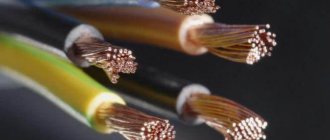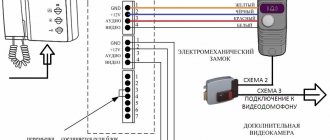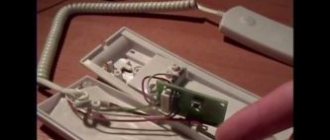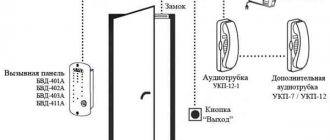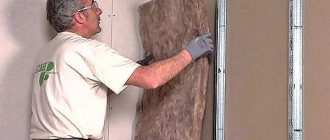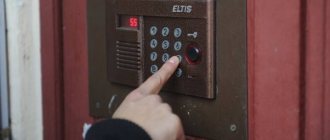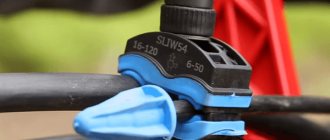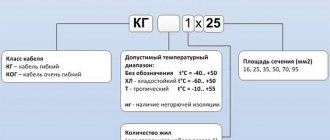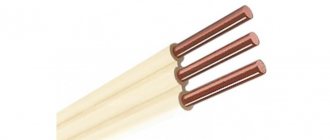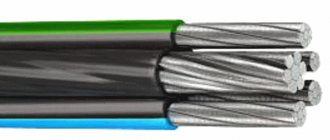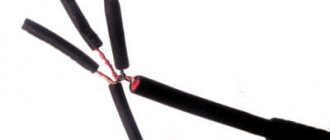How is a wire needed for an intercom?
Cable wholesale from warehouse
- home
- News
- Catalog
- Delivery
- Cooperation
- About company
- Contacts
- home
- News
- Catalog
- Delivery
- Cooperation
- About company
- Contacts
Mail for applications
- Send a request
- home
- News
- Catalog
- Delivery
- Cooperation
- About company
- Contacts
- home
- ||
- Articles
- ||
- Intercom cable
Basic criteria for selecting cables for connecting an intercom
1. Determine the type of intercom system.
If you plan to transmit only an audio signal, then you can choose a regular 2x0.4 TRP with a pair of cores that are enclosed in PET insulation. This brand is characterized by good flexibility and small dimensions, so it is convenient to work with.
For a full-fledged video system, you will need a 4-wire cable that will simultaneously provide broadcast of audio/video data streams, as well as 12 V power and grounding of the intercom system.
Various intercom models are connected with the features established by the manufacturers. An approximate cable connection diagram is shown in the figure on the right.
2. Carefully consider the distances that audio/video signals have to travel, i.e. cable length.
The strength and quality of the signal depends on the size of the cable cross-section. The larger the cross-section, the better the intercom will work. Please note that thicker cable products are more expensive.
Some practical tips:
for short distances, 15-20 m, buy a regular twisted pair cable of any variety of UTP, FTP or STP, for example, KSPV, ShVEP, ShVEV;
30-40 m - KVK brand is suitable;
40-50 m - here you will need a coaxial type RG-6 or RK-75;
over 50 m - try the RG-6 brand in combination with any power cable with a cross-section of 2x1.5 for power supply.
Determining the location of the tube in the house and laying the cable
The handset can be installed almost anywhere in an apartment or private house. But you need to choose the most convenient location based on the following parameters:
- the sound of the intercom should be clearly audible;
- You need to get to the tube as quickly as possible.
Traditionally, such a place is the hall or hallway. And an intercom with a video screen is installed on the wall next to the front door.
The most labor-intensive stage of installing equipment yourself is laying the cable. And first of all, you need to find the desired end of the wire that comes from the audio calling device. It is located in the driveway or house (when it comes to private property) panel.
The desired end of the cable needs to be extended - that is, connected to a shielded twisted pair cable, which in turn will be connected to the intercom in the living room.
Important: The length of the wire should not be more than 30-40 m. At a greater distance, the signal may be lost.
An extended wire is laid along and inside the wall. To do this, you will have to drill special channels in it using a drill with a special attachment. The cable is placed into the finished channels and sealed with alabaster. Then the marks are puttied and finished to finish.
If it is not possible to break through channels in the walls, you can choose the most gentle method: place the wires in special cable channels made of plastic. When the tube is planned to be installed near the door, they can be laid along the door frame. And at the entrance the cable is placed in a corrugated pipe. The main thing is that the wire does not lie next to the power cables, does not sag or break.
Cables for video intercom systems - review of brands
UTP 5e brands
This type of twisted pair cable will flawlessly perform its tasks of connecting the call station in the entrance and the user unit in the apartment at distances of 10-15 m. For installation, you can choose 2 or 4 pair Utp cat. 5e. Important: if there are sources of radio interference near the installation route, then it will be difficult for these brands of cables to ensure signal purity. In this case, we recommend using shielded FTP or STP, which, by the way, usually have a longer guaranteed transmission range - up to 50 m.
Brand KSPV
This cable is very popular and is often used in high-rise buildings, both along “risers” and directly in apartments. KSPV with a cross section of 0.5 mm copes well with connecting conventional intercom systems, for example, VIZITov (2 cores), as well as video intercoms (4 cores). The obvious disadvantages of KSPV include its relative rigidity and reduced signal quality over long distances. Analogues of KSPV are the more flexible brands KSPVG and MKGS.
Brand SHVEV (SHVEP)
These 4-core brands are specially designed to perform the tasks assigned to intercom cables. In addition to the power supply and audio cables, their design includes a special core responsible for broadcasting the video signal, which is equipped with a braided screen. Thanks to this, high quality video transmission from the intercom camera is achieved.
ShVEV and ShVEP differ only in the material of the outer protective shell. For ShVEV it is made of PVC plastic, for ShVEP it is made of light-stabilized PET. The first brand is suitable for installation only under conditions of complete protection from the sun's rays, i.e. in rooms or special structures, the second is also suitable for laying in open space.
Brand KVK-2P (KVK-2V)
This type of cable belongs to combined products (with the index P - for outdoor installation, with B - indoor). Their design includes both a power cable and a radio frequency conductor that transmits video signals. KVK brands work well at lengths of 30-40 m.
Brand RG-6
This is a real coaxial cable, which is used for professional video surveillance systems. In some cases, if complete absence of interference and loss of quality is required at distances of 40-50 meters or more, it is also used for the installation of intercom systems. An analogue of RG-6 is the RK-75 brand.
You can find out how to properly install a cable for a video intercom in this video review:
Source
Requirements for intercom wire
Combined high-frequency cable
Each type of construction work has its own specific and general operating requirements. For intercom wires they are as follows:
- To power the external unit and electronic lock, the voltage should not exceed 24V.
- If frequent voltage fluctuations are observed, it is recommended to temporarily de-energize the device, otherwise the likelihood of a short circuit and fire increases.
- The intercom and all auxiliary elements are placed away from sources of moisture and environments with high humidity.
- The requirements for the insulating layer apply only to those wires that are located outdoors. Their surface must be wrapped with polyethylene insulation.
RK-75 - Coaxial cable for connecting a video intercom with a copper central conductor
- The electromagnetic field emanating from some types of wires can distort the operation of the intercom, so it is more advisable to give preference to modifications equipped with separate shielding.
- If the resistance value is 20 Ohms, the device is used to establish long-distance communications.
- UTP;
- STP;
- FTP;
- KSPV-4*0.5;
- SHVEV;
- SHVEP.
For uninterrupted operation of the electromagnetic lock, electricians recommend connecting a separate cable to it.
The length of the wire directly depends on the distance from which the call panel is located. If the distance is no more than 15 meters, use any types of cables; if the interval is significantly larger, experts recommend considering the following models:
The peculiarity of the models is their combined structure. They are designed to work both indoors and outdoors around the entire perimeter.
Cable Requirements
The presence of switching connections that ensure the operation of intercom equipment leads to the fulfillment of certain requirements for the installation system and switching elements:
- Powerful sources of magnetic fields located nearby contribute to signal distortion. Therefore, using coaxial wire in the pipe will help avoid this.
- A line resistance cable of 20 Ohms will ensure normal operation of long communication lines.
- Do not use a wire with damaged insulation.
- The voltage of the external unit and electric lock must be 24 V.
- Increased room humidity is considered a prerequisite for a short circuit. It is not recommended to place equipment in such conditions.
- If there are sudden voltage changes in the network, operation of the intercom system is prohibited.
- The electromagnetic lock is equipped with an additional power cable.
Cable requirements for connecting a video intercom
The designs of video intercoms, depending on the home, imply the placement of connecting cables not only indoors, but also outdoors. Therefore, there are certain requirements for current-carrying conductors and insulation.
Copper wire of various diameters is most often used as current-carrying lines, but companies that produce low-cost, low-quality cable typically use steel wire coated with a thin layer of copper. Such copper-clad cores can be used both in a coaxial cable, used to connect analog video cameras, and in a cable made of twisted conductors (twisted pair), which is used for digital devices. Since a video intercom is considered one of the elements of the security system of an apartment or house, using such a cable is not recommended.
Connecting wires to a video intercom
To connect cable lines in video intercoms, blocks with terminals are used, where the wire is clamped under a screw. A copper-plated steel wire, unlike a copper wire, is not securely fixed in such a clamp, and an alternating contact can cause the device to fail. In addition, in those places where the copper coating has worn off, corrosion will certainly occur, especially at the connection points of the outer panel. Therefore, only copper cable should be used to connect individual video intercom nodes.
Cable insulation. There are no special requirements for the insulation of cables used indoors. Cables for video intercoms intended for outdoor use must have polyethylene insulation. This material perfectly protects the cable from high humidity, temperature changes and solar ultraviolet radiation. The cable for connecting a video intercom is characterized by such an important parameter as noise immunity. In a coaxial cable, the role of the screen is played by a metal braid that is connected to the device body. Twisted pair cable is also available with a common shield or with separate shielding for each pair.
In addition to video intercoms, residents of apartment buildings and private buildings often install devices such as video calls. They perform almost the same functions as an intercom with a camera, but are not always equipped with such wide functionality. You can read about video calls here.To install video surveillance in the entrance of an apartment building, you need to know all the technical issues and legal aspects related to this issue. Especially to answer this, we have prepared a detailed article for you, which you can study by clicking on the link.
Main types of cables
- Transmission of video signal from the camera to the subscriber device;
- Supply voltage to the electronic lock.
Coaxial cable type RK-75
RK-75 - Coaxial cable for connecting a video intercom with a copper central conductor
The main type of cable used to transmit an analog signal is coaxial cable. It has an asymmetrical design consisting of the following components:
- Central conductor;
- Insulating layer;
- Shielding braid;
- External insulation.
The central conductor through which the signal is transmitted is made of copper wire and can be single-core or multi-core. Next comes a layer of insulating polymer, which protects the cable from negative climatic factors. It can be polypropylene or polyethylene foam. For installation, it is more convenient to use cables for video intercoms with a protective sheath made of foamed polyethylene, since they allow bends of small radii.
The shielding braid is made of specially woven wire and a layer of aluminum foil. It performs the function of a screen and must be connected to a grounding point, otherwise it will simply work in the reverse order, namely, attract interference like an antenna. Coaxial cable is available in various sizes and is characterized by certain electrical parameters:
- Transmitted frequency band;
- Attenuation coefficient;
- Wave resistance.
Types of cables for connecting a video intercom
Video intercoms use various cable lines, the type of which is determined depending on the features of the system, area of application and other indicators. In this case, the choice of wires is usually made based on the purpose of use. Cable lines provide signal transmission and, if necessary, can supply voltage to individual components of the video system.
Coaxial cable RK-75
Coaxial cable is used to connect video system elements that support analog signal transmission. Such wires are distinguished by an asymmetrical design. Coaxial cable consists of:
- – central conductor;
- – insulation layer;
- – shielding braid;
- – a layer of external insulation.
The central conductor, which is made of copper wire, is responsible for transmitting the signal in a coaxial cable. This component can be single or multi-core. The central conductor is covered with a layer of insulating material (polypropylene or polyethylene foam), which prevents the negative effects of the external environment. When installing video intercoms, it is recommended to give preference to coaxial cables with polyethylene foam. The material allows the wires to be bent under a small radius, which makes installation of the system easier.
The safety of coaxial cables is ensured by metal wiring connected to the device body. The role of the shielding braid is performed by a specially braided wire covered with a layer of aluminum foil. It must be connected to a grounding point. Otherwise, the braided shielding will disrupt the operation of the video system by interfering with signal transmission, causing interference.
There are various sizes of coaxial cables on the market. When choosing wires of this type, it is recommended to pay attention to the following parameters:
- Attenuation coefficient. This indicator does not affect the operation of a system that uses relatively short cables.
- Band of transmitted frequencies. Does not play a decisive role in the operation of video systems.
- Wave resistance.
The main parameter that you should focus on when choosing cables is characteristic impedance. To connect the video intercom panel and the calling panel to the camera, you must use 75 Ohm wires. The maximum length of a coaxial cable line is 100 m. To organize a video system, wires of the following series are used:
- – RK-75-6-12;
- – RG-6;
- – RG-59.
The first abbreviation hides the technical characteristics of the cable. The first number shows the resistance parameter (75 Ohm), the second - the diameter of the insulating layer (6 mm). The number 1 indicates that the cable retains its original characteristics at temperatures not exceeding 125 degrees.
Varieties
The intercom system is connected with a four-core and three-core cable. It all depends on the distance between the intercom and the audio tube or video intercom. Interference is created over large distances; for this purpose, the technical properties of the wires used are taken into account. The following types of intercom equipment are used: twisted pair, coaxial and combined wire.
UTP cable
Its structure can contain from one to several pairs. All conductors are isolated from each other. The cable is divided into 7 categories and is called “twisted pair”. Each class differs in frequency range. The intercom system uses “twisted pair” category CAT 5. It has 4 copper cores of different colors, twisted at a certain pitch. There is no shield in this type, since the properties of twisted pair are used to combat interference during the transmission of differential signals.
Category 5 has found its active use in telephony and for broadcasting video signals. Advertising and information systems widely use twisted pair signal transmission in vehicles, shopping centers, and entertainment venues. Durable polyethylene insulation allows the CAT 5 brand to be used outdoors.
pros:
- Affordable price.
- Versatility of use.
- Possibility of transmitting two signals over one wire.
- Easy to install.
Minuses:
- Dependence on electromagnetic interference (signal attenuation and distortion).
- Low level of security during information transmission (radio interception and through twisted pair contacts).
- Exposure of conductors to high frequency current (signal weakening).
Specifications:
- Operating temperature in the range (+60 minus 55) degrees.
- Characteristic impedance 100 Ohm.
- Maximum operating voltage 125 V.
- Frequency range 0.772 – 100 MHz.
- Core diameter 0.51054 mm.
Coaxial cable
Its basis is a copper conductor, a layer of insulation on top, then a metal braid and all this is covered with insulation in the form of a plastic shell. Coaxial wire is designed to transmit high frequency signals.
In turn, it is divided into “thick” (diameter 1.2 cm) and “thin” (diameter 0.5 cm) types. The last option (“thin”) is distinguished by its flexibility and ease of installation in the wall.
pros:
- Low attenuation.
- Stability of properties.
- Affordable price.
- High throughput.
- Noise immunity is higher than that of twisted pair.
Minuses:
- Limited bandwidth.
- Difficult to install (thick type).
- Difficulty installing connectors.
- High price of connectors.
- Ease of damage.
Specifications:
- Minimal loss and signal strength.
- Used at a distance of over 50 meters.
- Characteristic impedance 50 Ohm.
Cable KVK-V (P)–2
This combination type is used for wired intercom connection over long distances. This type of structure includes 3 thin cores, all of them of different colors with copper braid and screen. It is optimal to use it for outdoor equipment when the distance exceeds 50 meters. This option allows you to simultaneously transmit control signals and power it.
pros:
- Long service life (15 years).
- Resistant type to external damage.
- Easy to install.
- Resistance to solar radiation.
Cons: attenuation level 4 dB.
Specifications:
- Maximum voltage 220 V.
- Permissible distance 450 m.
- Frequency range 10–40 MHz.
- Attenuation coefficient 4 dB/100 m.
Types of cables
For a regular video intercom, you need a cable that transmits the video signal to the subscriber device, as well as power. They are selected according to technical requirements.
Coaxial cable RK-75
This is the main option for transmitting analog images. Characteristic impedance – 75 Ohm. It is durable, inexpensive, but tough. To connect to devices you need a crimp connector. It costs more.
It is better to take a wire for a video intercom in a sheath made of foamed polyethylene. It can be bent.
Combined cables KVK
An ideal option for a system with an electronic lock, as it simultaneously acts as a supply wire and conductive wire.
Includes standard 75 ohm coaxial cable and two-conductor electrical cable. A structure with a polyvinyl chloride shell is laid inside the building. For outdoor installation, use models with foam polyethylene insulation. They can be laid in the ground, but inside a metal or plastic pipeline. It is possible to install the overhead line on a steel cable for support.
For installation in different conditions, select the appropriate KVK brand.
twisted pair
Used when servicing digital devices. Consists of 1, 2, 4 or more lines. Each consists of 2 single-core conductors twisted with a certain pitch. They produce many modifications of “twisted pair”:
ShVEP cable
The wire is designed specifically for the intercom. Can transmit video signal, supply power and provide control of an electronic lock. Designed for outdoor installation and has reliable protection. Includes several stranded wires, one of which is protected by its own shield.
ShVEP is used when laying communications at a distance of up to 60 m.
Types of wires for intercom
Before choosing a cable, you must first select the intercom model. If the device is equipped with an audio system, then a two-wire intercom cable is used.
If you need to connect a camera, you need to carefully select the product. You will need at least 12 V. In this case, a four-wire cable is used to provide communication with the device and grounding.
Important! When choosing a wire, the main role is played by the distance over which the signal will be transmitted. The greater the distance, the more cable you will need.
You may be interested in Description of PRKA wire
Coaxial wire
Coaxial cable type RK-75
Due to the high signal transmission speed and level of noise immunity, this type is widespread. A coaxial cable is an electrical cable consisting of a central conductive element, a screen, and a braid made of metal. These parts of the structure are separated from each other by internal insulation. All its elements are located in a single outer shell.
KVK-P cable
This type is characterized by its advantages and disadvantages. The advantages include:
- Coaxial cable is used for sound - transmission of speech, video signals, television, radio;
- the equipment is characterized by ease of installation;
- use provides high data transfer speed;
- it can be used to create communications over long distances;
- It has a coaxial wire and a high level of data protection; it is impossible to connect to it unnoticed to read it.
Coaxial cable for television and used for other areas has some disadvantages:
- the equipment is expensive;
- it does not have the highest level of resistance to damage;
- if the cable is thick, it will complicate installation.
Combined cable KVK
Using the data cable, the following is provided:
- operation of video cameras that do not have a built-in power source;
- television signal reception;
- control of remote camera rotation mechanisms;
- sound recording.
Copper conductors Please note! With an increase in the number of cores (there can be up to eight), the consumer value of such a cable increases.
They are structurally similar to power cables, but have less resistance and are not capable of transmitting significant power. The most effective and compact are combined cables for video surveillance. They contain several shielded wires hidden under a single shell, each of which is designed either to work with a video or audio signal, or to power all devices included in the video surveillance system. Such cables are mainly used in the installation of modern video surveillance systems.
twisted pair
Twisted pair is a special type of cable. Its structure is in the form of one or more insulated wires.
What does twisted pair look like?
The wires are neatly twisted together and protected by a PVC plastic sheath. This little trick allows you to reduce the negative consequences of the influence of inevitably occurring electromagnetic interference from external sources on the transmitted signal.
You may be interested in Description of wire clamps
Twisted pair has its advantages and disadvantages. The main advantages are a completely affordable price and ease of installation work. Unfortunately, there are also disadvantages:
- inevitably there is an overlap of signals between wires that are adjacent to each other;
- vulnerability to external electromagnetic fields;
- there is the possibility of an unauthorized connection that bypasses the owner of the Internet network. The longer the total length of the wires, the weaker the signal.
ShVEP for video surveillance
ShVEP cable
The SHVEV cable consists mainly of 3-4 copper or copper-plated flexible conductors. One of the cores is braided.
When using this cable, you can forget about parameters such as a characteristic impedance of 75 Ohms. However, the signal can still be transmitted over short distances.
Note! The popularity of this cable is also explained by the fact that with 4 cores, sound can be transmitted through one that is not used.
The CAT 5e cable, which has a diameter of 0.48 mm, is unshielded and is intended for indoor installation, costs 3.28 rubles per meter. Sold in coils, 305 meters long.
Coaxial wire RK-50-4-11, made in Russia with a characteristic impedance of 50 Ohms, with black insulation, is offered on markets for 55 rubles per meter. Brand RG-6U (01–201) – China, characteristic impedance 75 Ohm, estimated at 12 rubles/meter.
Brand KVK-V-2e, Russian, with a diameter of 6.9 mm, two cores 2x0.5 sq. mm, offers products for 30.43 rubles/meter.
How to choose a wire for an intercom
To choose the right cable for a video intercom, you need to check the model of the device that should be connected. And most importantly, the switching must be of high quality, made of good materials. Combined KVK wires from domestic suppliers meet modern requirements and are therefore quite suitable for use with intercom systems. Good coaxial options are offered in the range of companies:
- Cavel
- Belden
- CommScope
Perhaps the article will also be useful - how to choose a cable for video surveillance, link: https://videostoraj.ru/videonablyudenie/kakie-byvayut-vidy-kabelej-dlya-videonablyudeniya
It is necessary to buy models RG-6 or RG-59, which are characterized by high build quality and durability. Twisted pair wiring is produced by many companies. When buying one, you need to evaluate the material of the conductors and ignore versions with copper-plated steel cores. Since the cable for connecting a video intercom does not have a length of several hundred meters, saving on 20-30-meter products is simply unreasonable. It is better to refuse products from dubious manufacturers, for example, from China. Very often they release low-quality switching to the market at an extremely low price. But this is due to the use of steel cores and low-grade plastic for insulation.
Which to choose
For high-quality operation of the intercom, you should select a cable according to several criteria:
- Wire for video communication.
- Separate braided screen.
- Core cross-section.
The last parameter affects the length of the transmitted signal line. And the signal level depends on the length of the line when a video intercom is connected to the circuit, thus:
- The call panel up to 15 m can be connected with any cable: SHVEV, KSPV 4x0.5, KVK.
- Up to 50 meters, KVK 2x75 wire is used.
- For distances greater than 50 m, the manufacturer of video intercoms does not guarantee constant operation. For those people who want to take a chance, they offer coaxial cable.
Expert advice on cable selection
Before deciding which cable is needed for a video intercom, you must first select a specific model of such a device. And most importantly, the cable for the video intercom must be good. The combined cable KVK, domestically produced, meets all requirements and can be used without restrictions. When choosing a coaxial cable, you can pay attention to the products of such companies as Belden and CommScope. You should choose RG-6 or RG-59 cable, which is of high quality and long service life.
Twisted pair cables are produced by many companies, and when choosing, you should pay attention to the material of the conductors and do not purchase a cable with copper-plated steel cores. Since connecting a video intercom does not require purchasing kilometers of cable, it is not worth saving on buying 20-30 meters. Products from Chinese manufacturers should be avoided. They sell the cable at a very low price using steel cores and low grade plastic for the outer insulation.
With this they read:
Intercom with video camera for an apartment: selection criteria and installation features
Home video surveillance system: components and equipment selection
Video intercom for a private home: selection criteria and connection
How to connect a DVR to a computer Did you like the article? Share with friends on social networks!
Additional recommendations
Before purchasing cables, you need to decide on the video intercom model. Wires intended to connect video system elements must be of good quality. Combined cables (KVK) of Russian brands meet the requirements for such products. Therefore, such wires can be used when organizing any video systems. Among coaxial cables, products from the brands Belden, CommScope and Cavel stand out. To organize video systems, it is recommended to purchase RG-6 or RG-59, which have a long service life.
Before purchasing a twisted pair cable, you need to pay attention to the material from which the conductors are made. Cables with steel cores coated with a layer of copper should not be purchased. It is also not recommended to purchase cheap (especially Chinese) products. Moreover, for the installation of video systems, cables of short length are usually used.
Cabling. Required Tools
In our work we will use a set of tools:
- Self-tapping screws.
- Putty.
- Twisted pair.
- Wire cutters.
- Pliers.
- Screwdriver.
- Hammer.
- Insulating tape.
- Latex gloves.
- Knife.
We carry out the following steps:
- Choosing an intercom kit.
- Determining the location of the fastener.
- Cabling.
- Mounting and connecting the intercom.
Video intercom cable
Intercom systems equipped with video are quite demanding, so they must be vigilant when choosing auxiliary components and performing installation work.
For high-quality and uninterrupted operation, four-core cables are connected to the system. Experts also advise buying models with a separate shielded core. This will improve image quality. The shielded core protects the signal from interference.
At the installation stage, first of all, wires are laid between the monitors and calling panels. Each of these devices must be included in the overall system.
The power supply in the circuit is 12 V, this indicates the complete safety of using such wiring.
To avoid emergency and emergency situations, the wires for the intercom are laid separately from the power electrical lines.
Basic requirements for a video intercom cable
Laying a wire for a VCR is one of the construction works, so the requirements are strictly regulated:
You need to use wires that exactly match the type of intercom and installation conditions.
Cable for video intercom with electromechanical lock
An electromechanical or electromagnetic lock can be connected to the video intercom. The first is more reliable: in the absence of electricity, the door remains closed. The electromagnetic lock requires constant power and stops working when the current is turned off.
If an electronic lock is connected to an intercom, it is necessary to provide it with current, since a regular battery from the subscriber unit will not be enough. The same wire is used as a cable for a household video intercom with an electromechanical lock - UTP type. It is better to choose an option in which the wires through which the current is supplied were made of two twisted wires.
To power the electric lock, a voltage of no more than 24 V is required.
Cable for video intercom 4-wire
Such a device requires only a 4-wire version: 2 conductors provide sound transmission, 2 - images. If the wire is laid in the house, you can use a cable with a foil screen. If the line is laid outdoors, you need a coaxial one.
The cable includes 4 conductive cores and a shielding sheath. It is located coaxially with the conductor and is separated by an insulating polymer - polyethylene or polypropylene. The structure is complex: a copper or steel core is insulated with a layer of polyethylene, covered with foil and braided with copper or aluminum. The last layer is rubber or plastic insulation.
It is recommended to use coaxial wires for an intercom in a private house or apartment if the distance between the system elements is small.
Cable for connecting video intercom and calling panel
Which cable to connect the panel and video intercom depends on the distance.
The greater the distance, the higher the conductivity should be. General recommendations: Cables from reputable manufacturers are preferable.
Step-by-step instruction
- We decide on the choice of intercom kit. This could be a handset through which you can communicate at a distance. The kit also includes a button that performs the function of opening the doors. You can also purchase a video intercom. Here you can not only talk, but also see the person standing in front of the door.
- Next, choose a location to mount the device. The distance from the bottom of the surface is 150 cm. You should choose a location so that you can hear the ringing signal from all corners of the apartment or house.
- Now let's move on to laying the wire. The material used is twisted pair cable with a screen. Do not forget that the possible cable length is 40 meters. Laying the wire should not be done near power cables to avoid interference and, even worse, can lead to damage to the intercom. We provide additional power (220 V) to the place where the intercom module will be installed (entrance or gate of the house).
- A hole is drilled into the apartment where the cable is inserted. We secure the device with self-tapping screws and connect the power.
Features of the video intercom cable
Did you like the video? Subscribe to our channel!
A video intercom is no longer just an ordinary thing, but a necessary thing in the city, especially for security purposes. After all, thanks to the intercom, you can see who has come to visit you and immediately decide whether to let the person in or not. A video intercom is very useful in terms of uninvited guests and traveling salesmen who love to disturb the peace. However, for this device to work correctly, it is not enough to just buy an intercom and a video camera; you need to choose the right cable for the video intercom that would transmit information. The speed and quality of operation of the video intercom depends on the cable.
Cable Features
A video intercom cable is somewhat similar to an Internet cable, but it is much simpler, since information only needs to be transferred between two devices over a short distance. However, depending on the distance, the cable for connecting the video intercom may be different. Do not forget that as the distance increases, you need to take an improved cable with a larger number of cores to ensure stable operation of the video intercom.
In fact, a video intercom can act as a surveillance camera that will record everything that is happening in front of your door, or simply show you who is coming. It all depends on your desire, as well as on the installed equipment.
Types of video intercom cable
Combined cable KVK for connecting a video intercom.
The cable for connecting a video intercom can be three-wire or four-wire. If the distance from the camera to the video intercom does not exceed 30 meters, then a three-core cable can completely ensure stable data transmission. If the distance is greater, then you need to use a four-core cable, since at a greater distance the cable can pick up more interference. The video intercom cable must be protected from them, otherwise the video quality will be very low. The fourth core in the cable is a rope to support the cable; it is not intended to transmit a signal, but to ensure that the other cores of the cable are not damaged under their own weight if the cable is pulled in the air without additional support.
An important element is the cross-sectional size of the core, because the throughput depends on it. The intercom must not only receive the signal, but also transmit control commands to the lock, and, if necessary, transmit audio. That is why the KVK cable must be of high quality and meet all the technical requirements of the intercom.
Cable selection
To choose the right cable for connecting a video intercom, it is best to consult a specialist. If this is not possible, and you are going to install the intercom yourself, then you should carefully read the documentation for the intercom. However, you should not look at the minimum requirements of the cable, but it is best to buy a cable with maximum power and strength. Thus, the operation of the intercom will be truly stable and of high quality.
It is worth paying attention to the cable manufacturer. This must be a trusted factory, and the KVK cable itself is best purchased from a trusted supplier. This way you will protect yourself from possible problems.
